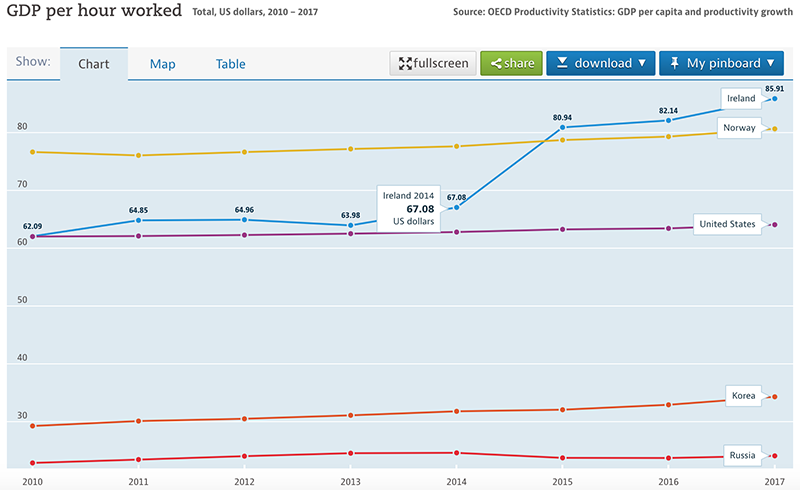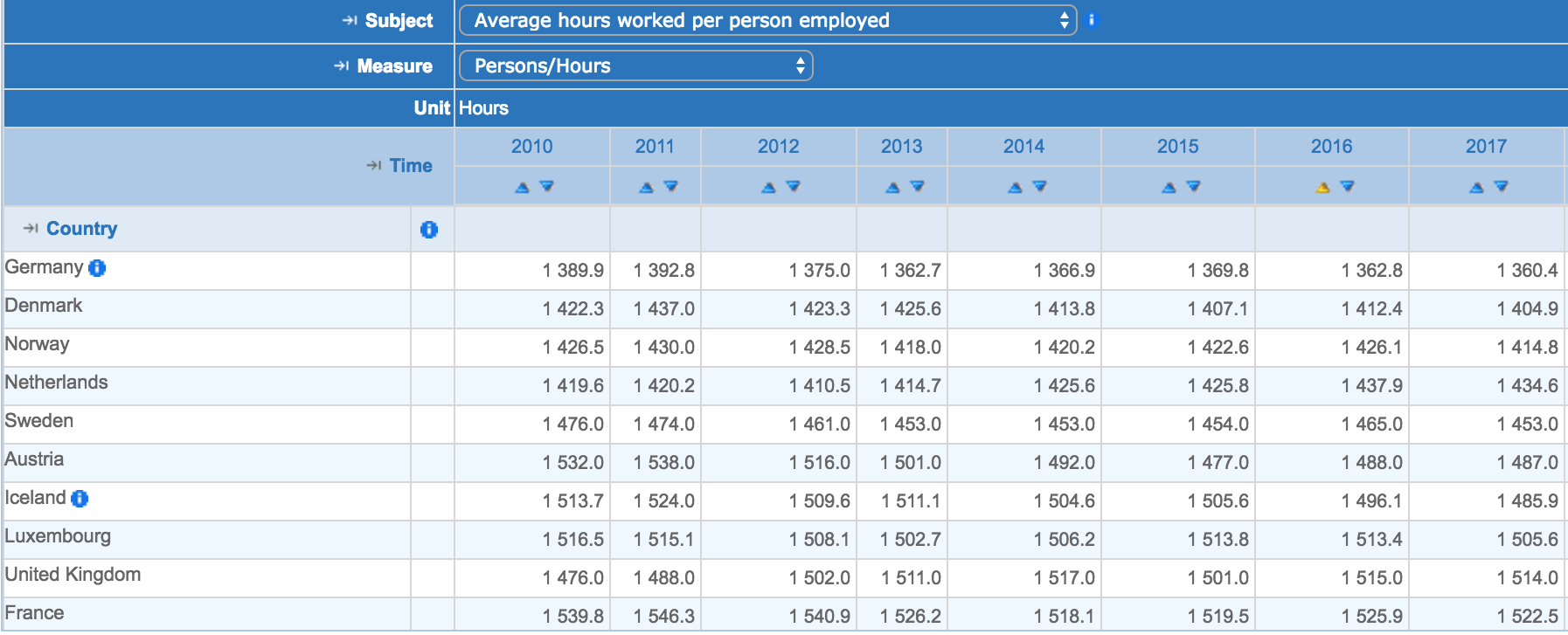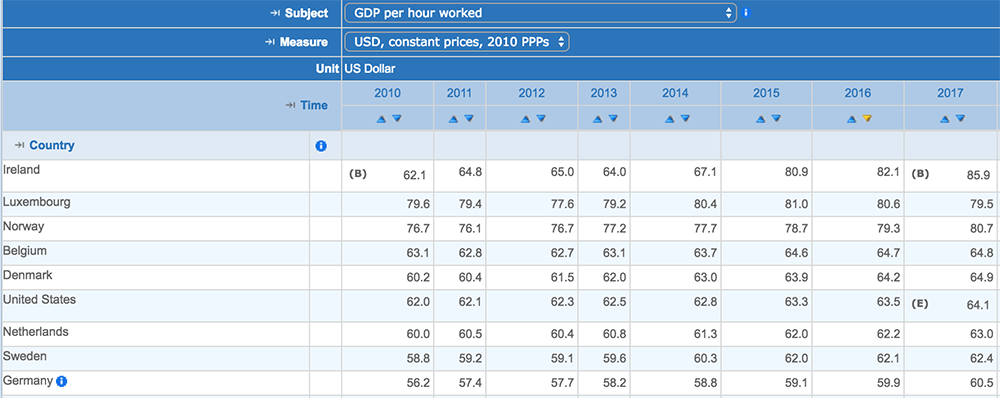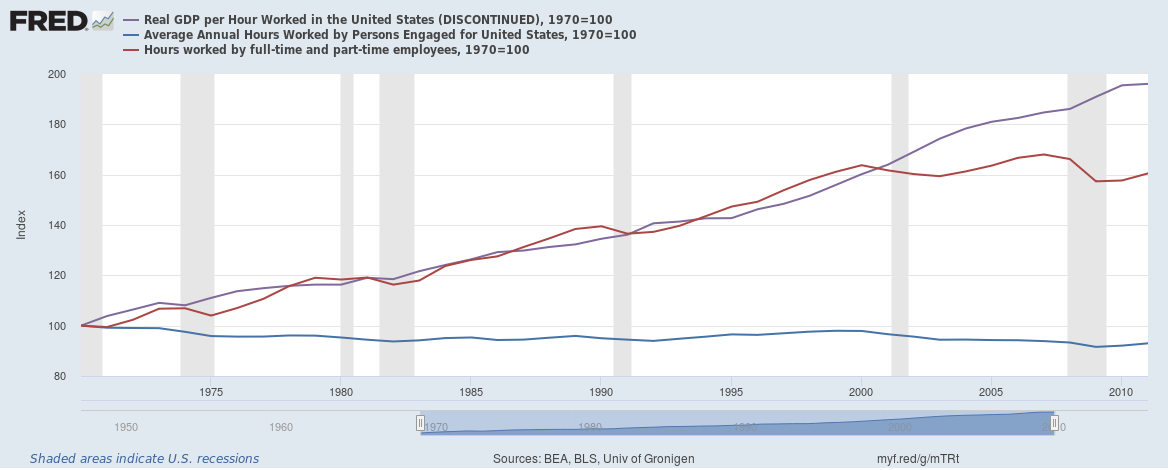Why a four-day work week is a bad fairy tale.
Analytical confusion about labor productivity and the dependence of this indicator on the number of working hours of each employee.
There is an interesting opposite of management systems. “Scheme 996” is common in China - working from nine in the morning to nine in the evening six days a week. Severely, but in 2018 in the Middle Kingdom a new unicorn appeared every three days. And in Davos, they recently cultivated the idea of a four-day working week. For me personally, these are two extremes. Only China with an almost bottomless reserve of personnel can afford the first, but who needs the second? After all, the work should be like?
Against this background, I decided to conduct a survey in my Groks Telegram channel . As a result, almost 900 people (81%) from more than 1000 respondents answered that they would like to reduce their working week to four days. Looking at the results of the survey, I wanted to find out what happiness is that increases productivity, and where the sources of this already global idea of increasing weekends are.
At the last WEF, psychologist Adam Grant and economist Rutger Bregman spoke about the benefits of more non-working days. Arguing their opinion, they remembered Henry Ford, who was one of the first to decide to reduce the work week from 60 to 40 hours. Physical tiredness of monotonous labor at the plant really had a negative impact on the performance of the enterprise. Since then, the 40-hour work week has become the standard in many countries.
')
They further referred to the study of the University of Warwick on the relationship of happiness and productivity. One of the conclusions of this scientific work was that if you give a person a chocolate bar or tell him a joke before performing a task, then his productivity will increase by 8-12%. By the way, in Business Insider there is a reservation that not all people will start working more efficiently with more free time.
And the beginning of all this discussion was laid by one small company on drawing up testaments from New Zealand. They were the first to decide to experiment to reduce the work week to four days. The experiment was successful - the productivity of the company's employees increased by 20%. And since then, the entire Perpetual Guardian team has switched to a new mode.
The founder of Perpetual Guardian claims that the experience of his company attracted the attention of more than 3 billion people through hundreds of news publications. And here, doubts about the expediency of the new tendency crept into my head.

Labor hour productivity by country
In one of the articles of the WEF I met a curious schedule. It served as the rationale for the fact that a larger number of working hours does not at all indicate greater productivity.
For example, in South Korea, people work a lot, but the ratio of GDP to the number of working hours per person is very small, according to the Organization for Economic Cooperation and Development. And I wanted to watch this metric in dynamics.

GDP per person-hour
On the graph, we see a significant increase in Irish labor productivity, provided that the WEF's productivity is the proportion of GDP per man-hour. How much has the number of hours worked by Irish residents for such a jump reduced?

Table parameters are not passed to the URL
Available tools on the OECD website leaves much to be desired. Unfortunately, not everything can be visualized, since in some places the ancient and buggy Flash is used. But according to the table we see that the arithmetic average number of working hours of the Irish did not decrease, but on the contrary increased.
Next, I decided to form the top countries by the least amount of labor hours per person. I took 2016 as a benchmark because it was this year that was reflected in the first infographic from Statista. (By the way, from where Statista took its values - I do not know. Ireland, according to the OECD, has an hourly output of $ 95, this error is observed for each of the countries.)

Leader - Germany. The average German at work spends 1362 hours a year - less than all the rest of Europe. Now, for the sake of completeness, we need to build a list of countries according to the productivity of the working hour in US dollars.

Looking at the last two tables, I do not observe any correlation between the number of hours worked and the productivity of each hour. Labor productivity in US dollars is determined only by the state of the economy of a country. However, the existing information for such conclusions is not enough. Therefore, I propose to refer to the data of the Fed.
I made a graph of the percentage change from year to year of the ratio of real US GDP to man-hours ( productivity ), the total number of man-hours and the average working hours per person per year from 1971 to 2011.

Federal Reserve Service
Such a sample allows us to say with certainty that there is no dependence between the number of working hours per person and the productivity of an hour. Productivity can fall along with the amount of working time per person, and it can grow, which is a direct contradiction of the idea of increasing human productivity while reducing his working time.
Pay attention to the extremum point in 2009. If the graph did not have a total number of labor hours, then one would think that reducing a person’s working time has a positive effect on productivity. But this is a big mistake.
My explanation for this phenomenon is as follows: a crisis is a bloodletting. Everyone is trying to optimize everything and everyone. There is a large-scale cleaning of all ineffective and overdue. Globally reduced the number of unnecessary labor hours. Therefore, the ratio of GDP to total working time, called productivity analysts, increases . See what the overall picture looks like:

In conventional units, the index doubled productivity, and the average number of working hours per person decreased from 100 to 93.
Noteworthy is the discrepancy between productivity and the global amount of labor hours, reminiscent of the dawn of Silicon Valley. At this point, I remembered one interesting graph, which I published almost three years ago in my Groks.

Revenues of companies in terms of one employee
On average, every Apple employee generates almost $ 2 million in revenue for the company for the year. This is the best indicator among the brands presented, although Apple, unlike Google, is not famous for corporate democracy and liberal labor conditions. However, their employees are more efficient.
Yes, not all efficiency can be measured in dollars, but which metric of labor productivity can be better than the amount of money raised through this work?
I do not confuse the concept of value and productivity. Obviously, a programmer from a small desk in the Kostroma region may turn out to be more productive than a developer from Google - while the value of the labor of the second is higher. But we are interested in a particular company and the feasibility of introducing a four-day working week in it.
On the one hand, we have a study with the empirical concept of happiness and its impact on productivity, as well as the successful experience of implementing a four-day work week in a small company from New Zealand.
On the other hand, we have macroeconomic evidence that there is no relationship between the number of working hours and labor productivity, expressed in dollars. Therefore, I believe that the four-day work week is a harmful tale not only for managers, but also for the economy of a particular country. Contrary to common sense and only thanks to human laziness, the idea has captured the minds of many.
If you are interested in such arguments that do not fit into the format of a full-fledged article, then subscribe to my channel . Thank you all very much for your attention.
There is an interesting opposite of management systems. “Scheme 996” is common in China - working from nine in the morning to nine in the evening six days a week. Severely, but in 2018 in the Middle Kingdom a new unicorn appeared every three days. And in Davos, they recently cultivated the idea of a four-day working week. For me personally, these are two extremes. Only China with an almost bottomless reserve of personnel can afford the first, but who needs the second? After all, the work should be like?
Against this background, I decided to conduct a survey in my Groks Telegram channel . As a result, almost 900 people (81%) from more than 1000 respondents answered that they would like to reduce their working week to four days. Looking at the results of the survey, I wanted to find out what happiness is that increases productivity, and where the sources of this already global idea of increasing weekends are.
At the last WEF, psychologist Adam Grant and economist Rutger Bregman spoke about the benefits of more non-working days. Arguing their opinion, they remembered Henry Ford, who was one of the first to decide to reduce the work week from 60 to 40 hours. Physical tiredness of monotonous labor at the plant really had a negative impact on the performance of the enterprise. Since then, the 40-hour work week has become the standard in many countries.
')
They further referred to the study of the University of Warwick on the relationship of happiness and productivity. One of the conclusions of this scientific work was that if you give a person a chocolate bar or tell him a joke before performing a task, then his productivity will increase by 8-12%. By the way, in Business Insider there is a reservation that not all people will start working more efficiently with more free time.
And the beginning of all this discussion was laid by one small company on drawing up testaments from New Zealand. They were the first to decide to experiment to reduce the work week to four days. The experiment was successful - the productivity of the company's employees increased by 20%. And since then, the entire Perpetual Guardian team has switched to a new mode.
The founder of Perpetual Guardian claims that the experience of his company attracted the attention of more than 3 billion people through hundreds of news publications. And here, doubts about the expediency of the new tendency crept into my head.

Labor hour productivity by country
In one of the articles of the WEF I met a curious schedule. It served as the rationale for the fact that a larger number of working hours does not at all indicate greater productivity.
For example, in South Korea, people work a lot, but the ratio of GDP to the number of working hours per person is very small, according to the Organization for Economic Cooperation and Development. And I wanted to watch this metric in dynamics.

GDP per person-hour
On the graph, we see a significant increase in Irish labor productivity, provided that the WEF's productivity is the proportion of GDP per man-hour. How much has the number of hours worked by Irish residents for such a jump reduced?

Table parameters are not passed to the URL
Available tools on the OECD website leaves much to be desired. Unfortunately, not everything can be visualized, since in some places the ancient and buggy Flash is used. But according to the table we see that the arithmetic average number of working hours of the Irish did not decrease, but on the contrary increased.
Next, I decided to form the top countries by the least amount of labor hours per person. I took 2016 as a benchmark because it was this year that was reflected in the first infographic from Statista. (By the way, from where Statista took its values - I do not know. Ireland, according to the OECD, has an hourly output of $ 95, this error is observed for each of the countries.)

Leader - Germany. The average German at work spends 1362 hours a year - less than all the rest of Europe. Now, for the sake of completeness, we need to build a list of countries according to the productivity of the working hour in US dollars.

Looking at the last two tables, I do not observe any correlation between the number of hours worked and the productivity of each hour. Labor productivity in US dollars is determined only by the state of the economy of a country. However, the existing information for such conclusions is not enough. Therefore, I propose to refer to the data of the Fed.
I made a graph of the percentage change from year to year of the ratio of real US GDP to man-hours ( productivity ), the total number of man-hours and the average working hours per person per year from 1971 to 2011.

Federal Reserve Service
Such a sample allows us to say with certainty that there is no dependence between the number of working hours per person and the productivity of an hour. Productivity can fall along with the amount of working time per person, and it can grow, which is a direct contradiction of the idea of increasing human productivity while reducing his working time.
Pay attention to the extremum point in 2009. If the graph did not have a total number of labor hours, then one would think that reducing a person’s working time has a positive effect on productivity. But this is a big mistake.
My explanation for this phenomenon is as follows: a crisis is a bloodletting. Everyone is trying to optimize everything and everyone. There is a large-scale cleaning of all ineffective and overdue. Globally reduced the number of unnecessary labor hours. Therefore, the ratio of GDP to total working time, called productivity analysts, increases . See what the overall picture looks like:

In conventional units, the index doubled productivity, and the average number of working hours per person decreased from 100 to 93.
Noteworthy is the discrepancy between productivity and the global amount of labor hours, reminiscent of the dawn of Silicon Valley. At this point, I remembered one interesting graph, which I published almost three years ago in my Groks.

Revenues of companies in terms of one employee
On average, every Apple employee generates almost $ 2 million in revenue for the company for the year. This is the best indicator among the brands presented, although Apple, unlike Google, is not famous for corporate democracy and liberal labor conditions. However, their employees are more efficient.
Yes, not all efficiency can be measured in dollars, but which metric of labor productivity can be better than the amount of money raised through this work?
I do not confuse the concept of value and productivity. Obviously, a programmer from a small desk in the Kostroma region may turn out to be more productive than a developer from Google - while the value of the labor of the second is higher. But we are interested in a particular company and the feasibility of introducing a four-day working week in it.
Apotheosis
On the one hand, we have a study with the empirical concept of happiness and its impact on productivity, as well as the successful experience of implementing a four-day work week in a small company from New Zealand.
On the other hand, we have macroeconomic evidence that there is no relationship between the number of working hours and labor productivity, expressed in dollars. Therefore, I believe that the four-day work week is a harmful tale not only for managers, but also for the economy of a particular country. Contrary to common sense and only thanks to human laziness, the idea has captured the minds of many.
If you are interested in such arguments that do not fit into the format of a full-fledged article, then subscribe to my channel . Thank you all very much for your attention.
Source: https://habr.com/ru/post/454832/
All Articles